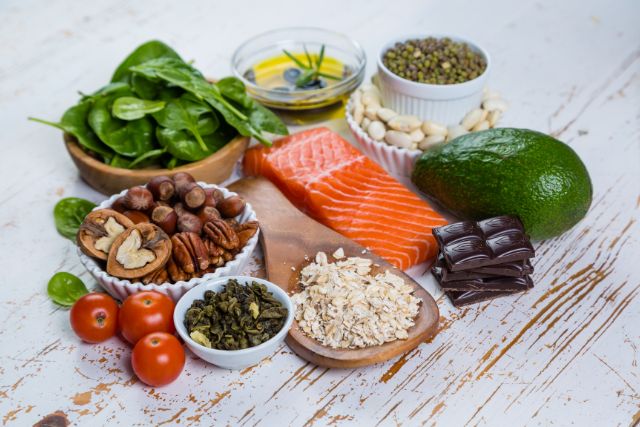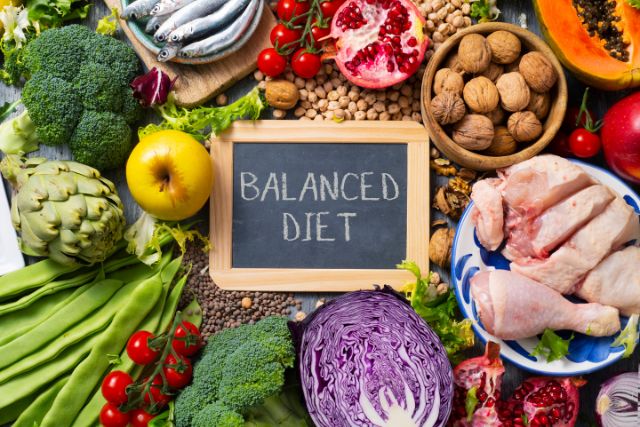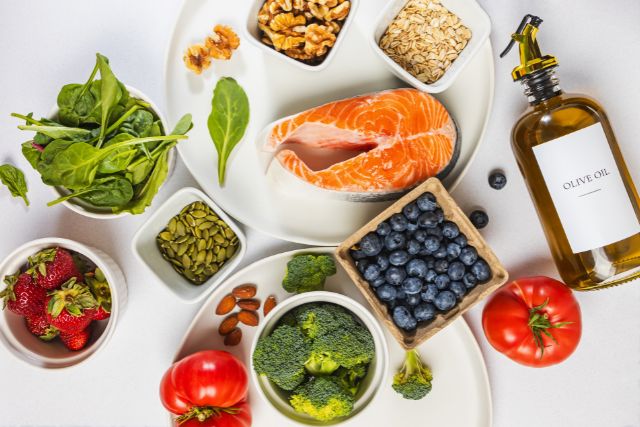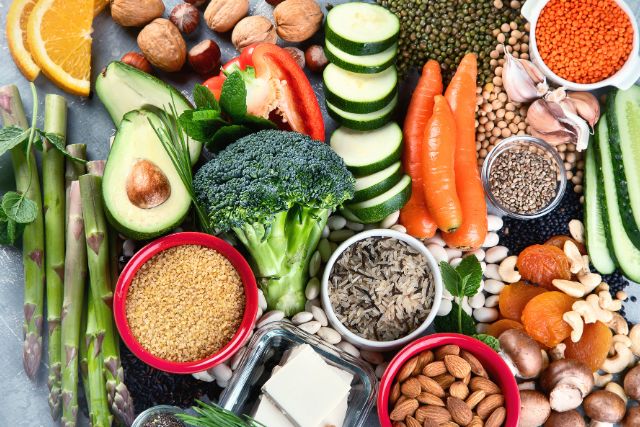Recent Posts
-

- Diabetes-Friendly Nutrition: Smart... 08.12.2024
-

- Nutrition for Chronic... 08.12.2024
-

- Anti-Inflammatory Diet: Food... 08.12.2024
-

- Low-Sodium and Heart-Healthy:... 08.12.2024
-

- Plant-Based Diets for... 08.12.2024
Diabetes-Friendly Nutrition: Smart Food Choices for Better Blood Sugar Control

When it comes to properly managing diabetes, a comprehensive approach is required, with diet playing a very important part in the regulation of blood sugar levels. In addition to assisting in the maintenance of healthy glucose levels, making the appropriate meal choices also contributes to general well-being. In this piece, we will discuss how to select foods that are suitable for diabetics and provide advice on how to create a diet that is both balanced and suitable for those with high blood sugar.
Because carbohydrates are converted into glucose during digestion, they have the greatest direct influence on the amount of sugar that is present in the blood that is present. People who have diabetes should make it a priority to have an understanding of the ways in which various kinds of carbohydrates influence their blood sugar levels.
Simple Carbohydrates
Products such as candies, baked products, sweet beverages, and some fruits are examples of foods that include them. Because of their fast absorption, they cause a sharp increase in the amount of sugar in the blood. It is recommended that they be used in moderation, if at all.
Complex Carbohydrates
Complex carbs, which may be found in foods such as legumes, starchy vegetables, and whole grains, are absorbed more slowly than simple carbohydrates, which results in a more gradual rise in blood sugar. The consumption of these foods during meals can assist in the maintenance of stable glucose levels.
Fiber
Vegetables, fruits, and whole grains are examples of foods that are high in fiber. These foods slow down the absorption of sugar, which results in improved regulation of blood sugar levels. A diet that is suitable for diabetics must include foods that are high in fiber.
Smart Food Choices for Blood Sugar Control
The following is a list of dietary categories and examples that are suitable for diabetics and can assist in the management of blood sugar levels:
- Non-Starchy Vegetables
As a result of their low calorie and carbohydrate content, vegetables that are not starchy become an excellent option for the treatment of diabetes. In addition to providing vital vitamins, minerals, and fiber, they affect blood sugar levels in a somewhat insignificant way.
Examples: Leafy greens (spinach, kale), broccoli, bell peppers, cauliflower, cucumbers, and zucchini.
- Lean Proteins
Considering that protein has a negligible impact on blood sugar levels, it is an essential component of a well-balanced diet that is suitable for diabetics. When it comes to weight control and lowering the risk of cardiovascular disease, choosing lean sources of protein is advantageous.
Examples: Chicken, turkey, fish (especially fatty fish like salmon and mackerel), tofu, and eggs.
- Whole Grains
Whole grains, as opposed to processed grains, which can create spikes in blood sugar levels, offer a more consistent release of glucose due to the presence of fiber in whole grains. They are also beneficial to the digestive system.
Examples: Brown rice, quinoa, oats, barley, and whole-wheat bread or pasta.
- Healthy Fats
The consumption of fats does not immediately cause an increase in blood sugar levels; rather, selecting the appropriate types of fats can enhance heart health. This is especially important for diabetics, who are at a greater risk of developing cardiovascular disease. Limit your consumption of saturated and trans fats while focusing on unsaturated fats.
Examples: Avocados, nuts, seeds, olive oil, and fatty fish.
- Low-Glycemic Fruits
Fruits can be included in a diet that is accommodating to people with diabetes; nevertheless, it is essential to concentrate on fruits that have a low glycemic index (GI). These fruits have a slower rate of sugar release into the circulation, which helps to prevent spikes in blood sugar levels.
Examples: Berries (strawberries, blueberries), apples, pears, and citrus fruits like oranges and grapefruits.
Strategies for Smart Eating
When it comes to controlling your blood sugar levels, the manner in which you consume meals is just as essential as selecting the appropriate items. Listed below are some useful pointers:
- Portion Control
When ingested in high quantities, even nutritious meals have the potential to cause increases in blood sugar levels. When consuming foods that include carbs, it is very important to maintain control over the portion sizes.
- Regular Meal Timing
Consuming food at regular intervals is an effective method for preserving stable blood sugar levels. Unbalanced blood sugar levels might be the result of skipping meals or eating too late in the day.
- Mindful Snacking
Choose a little quantity of almonds, a piece of low-glycemic fruit, or some veggies with hummus as your snack of choice if you find yourself in need of a snack. Steer clear of processed snacks, as they frequently include a lot of sugars that are covert.
- Stay Hydrated
Consuming an adequate amount of water is not only necessary for maintaining general health but also can assist in the management of blood sugar levels. Sugary beverages, such as sodas, fruit juices, and sweetened teas, should be avoided since they have the potential to produce fast rises in blood glucose levels.
Foods to Avoid
A number of foods have the potential to rapidly spike blood sugar levels; thus, it is best to avoid or consume them in moderation:
- Sugary beverages: These are loaded with simple sugars that spike blood sugar levels.
- Refined grains: White bread, white rice, and pastries lack fiber and cause quick glucose spikes.
- Processed snacks: Chips, cookies, and cakes often contain hidden sugars and unhealthy fats.
- Fried foods: High in unhealthy fats and calories, fried foods can contribute to weight gain and insulin resistance.
Building a Balanced Plate
A simple strategy for creating a diabetes-friendly meal is the Diabetes Plate Method:
- Fill half your plate with non-starchy vegetables: These provide fiber, vitamins, and minerals without affecting blood sugar levels significantly.
- One-quarter of your plate should be a lean protein: Choose options like grilled chicken or fish.
- The final quarter should be a whole grain or starchy vegetable: Such as quinoa, brown rice, or sweet potatoes.
- Add a serving of healthy fat: Avocados, olive oil, or a small handful of nuts to round out the meal.
Nutritional management of diabetes does not have to be restricted or difficult in order to be effective. Maintaining control of your blood sugar levels while indulging in a broad variety of delectable foods is possible if you make informed decisions about the foods you eat and prioritize meals that are well-balanced and rich in nutrients. You may live a better and more active life by making even little adjustments to your diet and controlling the amount of food you consume. This will have a big influence on your general health and the management of your diabetes.
Disclaimer: The information provided in this article is for general information purposes only. All information in this article is sourced from other websites, and we do not represent any rights regarding the contents and information on the site. All rights belong to their original owner.




